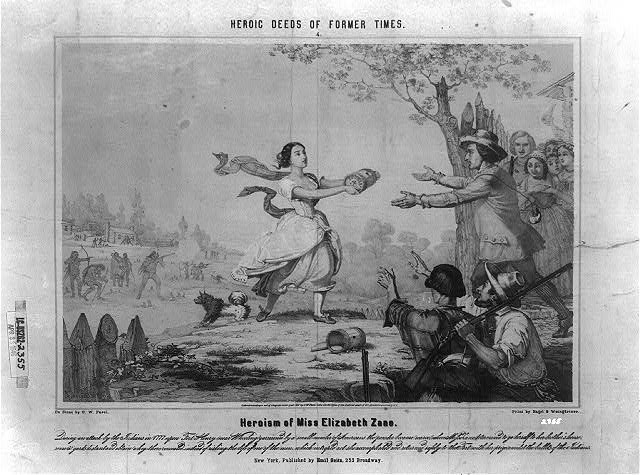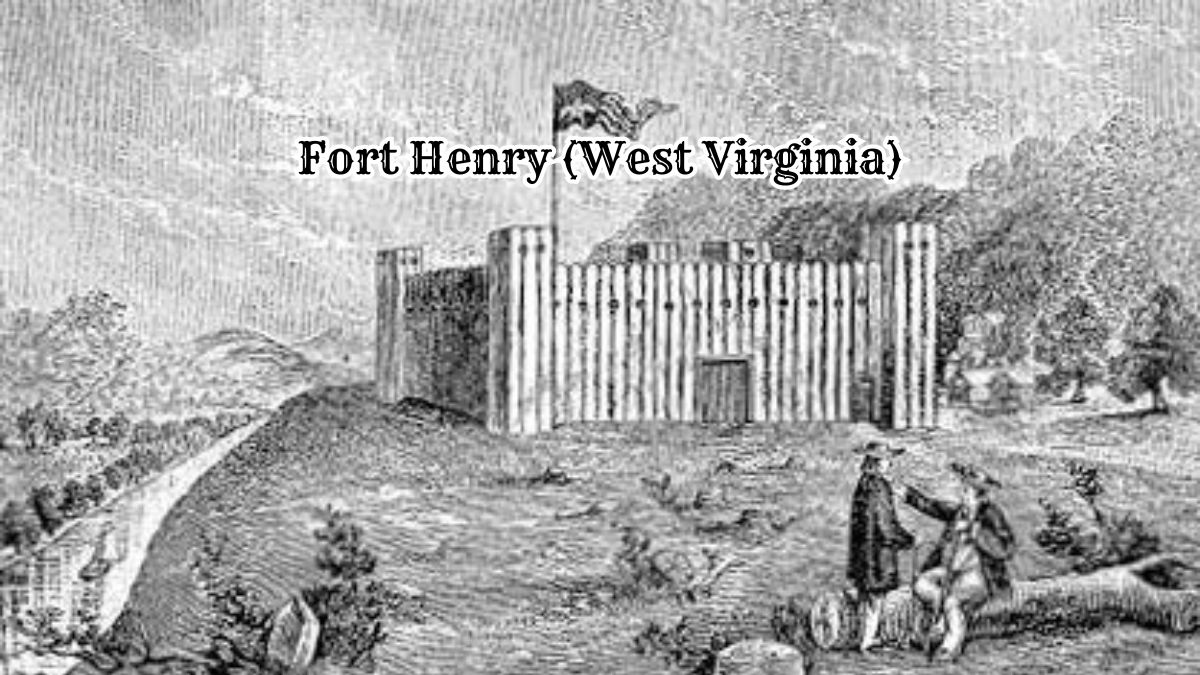Fort Henry in Wheeling, West Virginia, is a landmark of American history. It was particularly important during the Revolutionary War.
This article explores its critical role as a defensive stronghold against British and Native American forces.
From its strategic construction in 1774 to key battles and heroic figures like Betty Zane, Fort Henry exemplifies the resilience and bravery of early settlers.
Its preservation efforts and continued relevance today highlight its enduring legacy.
Whether you’re interested in historical architecture, pivotal military engagements, or the fort’s modern-day significance, Fort Henry offers valuable insights into America’s past.
History of Fort Henry (West Virginia)
Fort Henry, located in Wheeling, West Virginia, played a crucial role during the American Revolutionary War. The fort was a key defensive structure against British and Native American forces.
Key Events and Figures:
- The fort witnessed several significant battles.
- Prominent figures, such as Captain Samuel Mason, defended it.
Location and Impact:
- Situated in present-day Ohio County, West Virginia.
- Fort Henry served as a vital point for settlers in the region.
Construction and Purpose:
- Built in 1774 by Virginia settlers.
- Aimed to protect against threats from British forces and Native American tribes.
Battle of Fort Henry:
- One of the notable battles occurred in September 1777.
- Defenders successfully repelled a combined force of British soldiers and Native American warriors.
Legacy:
- Fort Henry is an important part of West Virginia history.
- It symbolizes the resilience and bravery of early American settlers.
Founding and Construction
Fort Henry in West Virginia has a rich history tied to its strategic location and design. Its transformation marked a significant shift in the region’s development.
Transformation into Fort Henry
Fort Henry, constructed in 1774, was originally known as Fort Fincastle. It was later renamed in honor of Patrick Henry, the Virginia governor.
The fort’s strategic location was situated in Wheeling to protect settlers from Indigenous attacks and British invasions.
Timbers were transported from nearby forests, showcasing the region’s utilization of local resources.
Colonel William Crawford supervised the fort’s transformation. The fortifications, which included a stockade and various blockhouses, created a highly defensible structure.
Design and Strategic Importance
Fort Henry was designed predominantly from timber and featured a stockade surrounding two main blockhouses.
The blockhouses served dual purposes: defense and storage. One of the blockhouses often housed supplies necessary for survival during sieges.
The fort’s location at the confluence of the Ohio River and Wheeling Creek was vital. It offered a strategic vantage point over the waterways, allowing for early warnings of potential threats.
This placement made it a crucial defensive structure during tumultuous periods in American history.
Key Historical Figures
Fort Henry, situated in present-day West Virginia, has a rich history marked by significant figures whose contributions shaped its legacy. Among them are legendary individuals like Betty Zane and notable military leaders and pioneers.
Betty Zane’s Heroic Legend

Betty Zane is best remembered for her courageous act during the Siege of Fort Henry in 1782.
Facing a shortage of gunpowder, she volunteered to retrieve supplies from her brother’s nearby cabin.
Amid heavy gunfire, she sprinted across open ground and returned with the much-needed ammunition.
Her bravery was pivotal in defending the fort, turning the tide against the attackers.
This heroism has been celebrated in various forms, including novels and local commemorations. Betty Zane’s legacy endures as a symbol of courage and patriotism.
Military Leaders and Pioneers
Several key military leaders and pioneers associated with Fort Henry played crucial roles in its defense and development.
Samuel McColloch is renowned for his daring ride, known as McColloch’s Leap, where he escaped capture by plunging his horse down a steep hillside.
George Rogers Clark, another significant figure, was instrumental in the military strategy against British and Native American forces. His campaigns expanded American influence in the Western territories.
Simon Girty, though often viewed as a traitor for his alliance with Native Americans and the British, was a complex character involved in several conflicts around Fort Henry.
Other notable figures include Silas Zane, brother of Betty Zane, a key defender and settler, and Viscount Fincastle, who documented early frontier life.
Lord Dunmore and George Washington also had indirect influences through their broader roles in colonial and national affairs.
Military Engagements at Fort Henry
Fort Henry played a significant role in various military engagements during the 18th century. Conflict with Native American tribes, clashes with British forces, and a pivotal siege in 1782 characterize the fort’s storied history.
Native American Relations and Conflicts
Relating to Fort Henry, Native American relations often involved conflict, particularly with the Shawnee.
The Shawnee conducted multiple raids and skirmishes, reacting to the encroachment of settlers.
These encounters frequently saw using gunpowder, militia, and defensive tactics to protect the garrison.
Hostilities resulted in periodic peace parleys but frequently ended in renewed clashes.
Fort Henry’s location made it a strategic point, and its defenses were repeatedly tested.
Seasonal skirmishes proved arduous, and supplies were a constant concern. The fort’s garrison used cannon fire when available to repel larger attacks.
British and Colonial Encounters
The fort saw significant action during the various British and Colonial Encounters.
During the American Revolutionary War, Fort Henry’s strategic importance was acknowledged by both British soldiers and colonial militia.
Skirmishes often involved attempts by the British to seize control, recognizing the fort’s symbolic and logistical value.
Colonial forces, often outmanned and with limited resources, focused on holding the fort.
Critical supplies like gunpowder were meticulously rationed.
The engagements ranged from brief skirmishes to prolonged standoffs. The colonial forces’ resilience was frequently tested under the threat of surrender.
The 1782 Siege: A Defining Battle
One of the most critical events was the 1782 Siege.
British forces and their Native American allies launched a sustained attack on Fort Henry.
This siege was notable for the use of cannon, unconventional tactics, and the heroic defense mounted by the fort’s militia. Despite facing overwhelming odds, the garrison held firm.
The defenders utilized every resource, from gunpowder to defensive fortifications.
The siege highlighted the fort’s importance and the determination of its defenders. This battle firmly imprinted Fort Henry’s legacy in colonial military history.
Cultural and Geographic Context
Fort Henry provides a fascinating glimpse into the combined influences of regional development and indigenous interactions.
Geographically positioned in what is now West Virginia, it played a crucial role in shaping the local culture and settlement patterns.
The Role of Wheeling in Regional Development
Wheeling, located along the Ohio River, was a significant catalyst in the development of the Upper Ohio Valley region.
Its position made it a natural hub for trade and transport. The city connected Pennsylvania and other frontier settlements, fostering economic growth and cultural exchange.
Wheeling’s proximity to Fort Henry provided essential support for settlers.
The fort acted as a defensive stronghold and a base for further expansion into the Ohio Valley.
Wheeling’s river access facilitated movement and commerce, crucial for the prosperity of early settlements in the region.
Fort Henry’s Relationship with Indigenous Tribes
Fort Henry’s history is closely intertwined with the Mingo and other indigenous tribes of the Ohio Valley.
The fort’s establishment on the frontier marked a period of complex relationships and conflicts. Settlers often faced resistance as they encroached on native lands.
Indigenous tribes in the area had established rich cultural traditions long before the arrival of settlers.
They engaged in trade, diplomacy, and occasional skirmishes with the settlers from Fort Henry. These interactions shaped the region’s cultural landscape and left a lasting impact on its history.
Fort Henry Today
Fort Henry is now under the streets of Wheeling, West Virginia.
Fort Henry in West Virginia has a profound historical significance that resonates today. Its legacy is preserved through educational efforts and various memorials that honor its place in American heritage.

Cory is a website owner and content creator who enjoys fishing, history, coin collecting, and sports, among other hobbies. He is a husband and father of four.
Romans 15:4 For whatever was written in former days was written for our instruction, that through endurance and through the encouragement of the Scriptures we might have hope.

